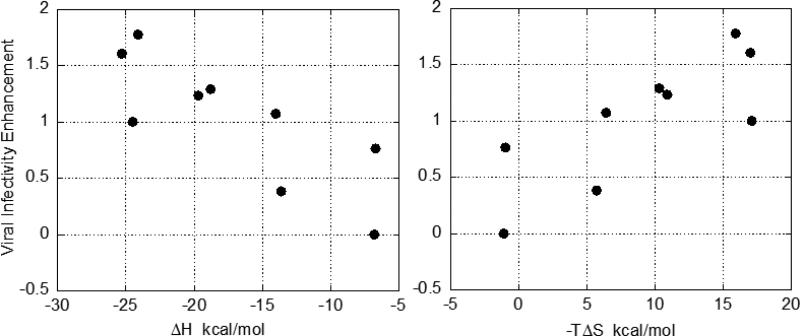Figure 3.
The correlation between viral infectivity enhancement in CD4 negative cell and the enthalpic and entropic contributions to the binding affinity. NBD-556 enhances viral infectivity in CD4 negative cells by three orders of magnitude (4). The effect of the compounds on infection with HIV-1 was studied by using recombinant, luciferase-expressing HIV-1 carrying the wild-type HIV-1YU2 envelope glycoproteins. HIV-1 was incubated with increasing concentrations of the compound and added to Cf2Th-CCR5 cells lacking CD4 receptor. Cells were lysed 48h later and luciferase activity measured (4). The area under the dose-response curve for each compound was calculated and normalized to the value obtained in presence of the reference compound, NBD-556. The enthalpy and entropy changes were determined at 25°C by isothermal titration calorimetry using a high-precision VP-ITC titration calorimetric system from MicroCal Inc. The calorimetric cell (~1.4 mL), containing gp120 from the YU2 strain dissolved in PBS (Roche Diagnostics GmbH), pH 7.4 with 2% DMSO, was titrated with the different inhibitors dissolved in the same buffer. The concentration of gp120 was ~2 μM and inhibitor at a concentration of 80 – 150 μM was added in aliquots of 10 μL until saturation was reached (usually in 20 – 30 injections). The compounds used in the plots were selected for measurements of viral infectivity enhancement based on the wide range of enthalpy and entropy values.

